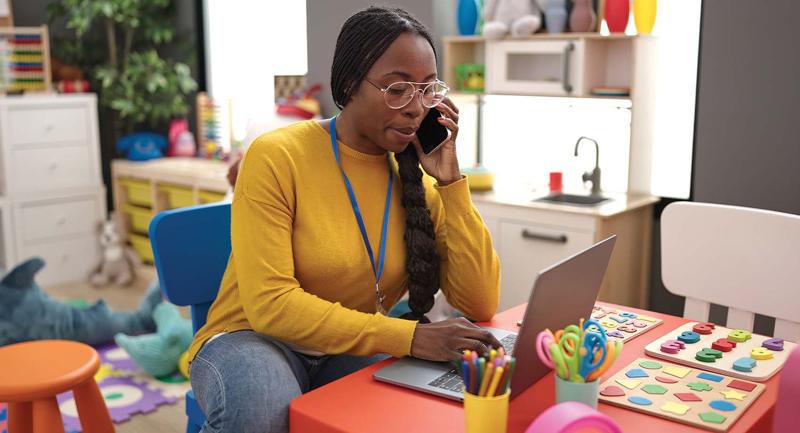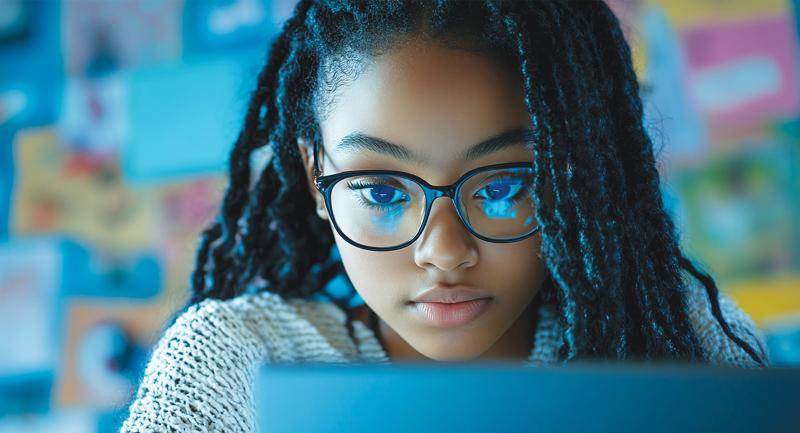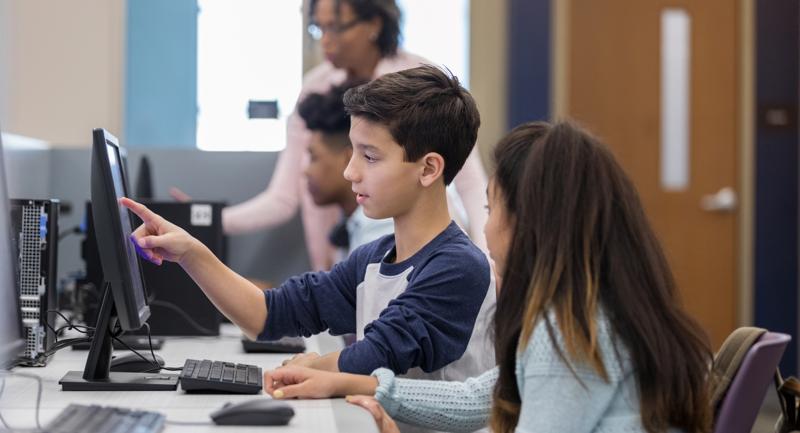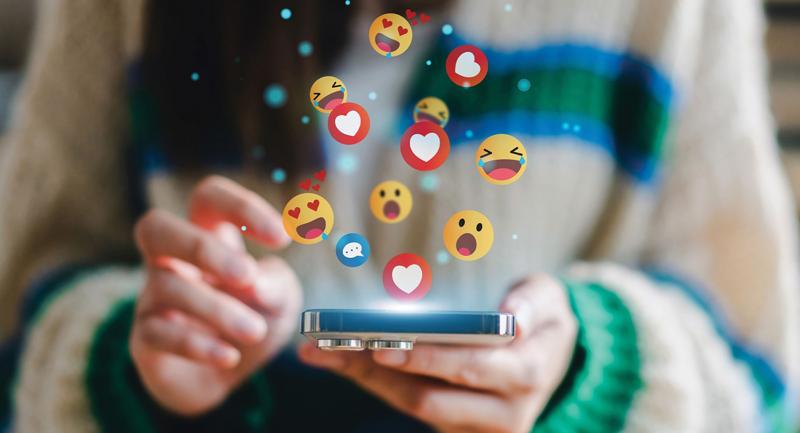Sometimes it takes a major catastrophe to transform how we deliver schooling. In 2005, in the aftermath of Hurricanes Katrina and Rita, Web sites went up in Louisiana, Texas, and Mississippi to help educators, students, families, and school districts deal with the crisis. The Mississippi Department of Education (2005) announced free online courses at the high school level, and institutions from 38 states provided more than 1,300 free online courses to college students whose campuses had been affected by the hurricanes (Sloan-C, 2006).
Health emergencies in recent years have also caused educators to ponder the benefits of the Web. In 2003, during the SARS epidemic in China, government officials decided to loosen restrictions on online and blended learning (Huang & Zhou, 2006). More recently, as concerns about the H1N1 virus mounted, many U.S. schools piloted new educational delivery options, such as free online lessons from Curriki (www.curriki.org) and Smithsonian Education (www.smithsonianeducation.org). Microsoft has even offered its Microsoft Office Live free of charge to educators dealing with H1N1. The software enables teachers to share content, lesson plans, and other curriculum components, while students access the virtual classroom workspace, chat with one another on discussion topics, and attend virtual presentations. Blended Learning Is Here
The focus today is on continuity of learning, whether learning is disrupted because of a hurricane or the flu—or because of other factors entirely. Schools may have difficulty serving students who live in rural areas; reduced budgets may limit the range of learning that a school can offer; people young and old involved in serious scholarly, artistic, or athletic pursuits may find it difficult to adhere to the traditional school structure.
In light of these developments, some school districts are resorting to blended learning options. They are using tools like Tegrity (www.tegrity.com); Elluminate (www.elluminate.com); and Adobe Connect Pro (www.Adobe.com/products/acrobatconnectpro) to provide online lectures. Many are developing procedures for posting course content and homework online. Some are trying phone conferencing with Skype (www.skype.com) or Google Talk (www.google.com/talk). Others are evaluating digital textbooks and study guides. Still others are sharing online videos from places like Link TV (www.linktv.org); FORA.tv (http://fora.tv); or TeacherTube (www.teachertube.com), with teachers often asking students to post their reflections in blogs or online discussion forums. Many schools have begun to foster teamwork by using Google Docs (http://docs.google.com) and wikis. Although some schools use e-mail to communicate messages districtwide, others are experimenting with text messaging or Twitter (http://twitter.com). High School—Online
Tools like these enable great flexibility in learning. When I take a break from work and jog across my campus, smack in the middle of it I come to Owen Hall, home of the Indiana University High School (http://iuhighschool.iu.edu). Indiana University High School (IUHS) students can take their courses online or through correspondence or some combination of the two. Students range from those who live in rural settings to those who are homebound, homeschooled, pregnant, or gifted. Some are Americans living in other countries; some are natives of other countries whose parents want them to have a U.S. education. Some are dropouts or students academically at risk. Still others are teenagers about to enter college who need advanced placement courses or adults who want to finish their high school degrees (Robbins, 2009). Across the board, many of the 4,000 students enrolled in IUHS simply did not fit in the traditional U.S. high school setting. Take 16-year-old Evren Ozan (www.ozanmusic.com), the Native American flute prodigy whose music I've enjoyed for several years. I'm listening to him as I write this sentence. Many of Evren's vast accomplishments— he's been recording music since he was 7 years old—would not have been possible without the online and distance education experiences he benefited from during his teen years when most of his peers were attending traditional high schools. Also attending IUHS is 15-year-old Ania Filochowska, a Polish-born violinist who has studied with several great masters of the violin in New York City since 2005. Similarly, Kathryn Morgan enrolled in IUHS so she could continue her quest to become a professional ballerina. With the flexibility of online courses and degrees, Kathryn danced full-time and pursued an apprenticeship with the New York City Ballet. Then there is the amazing story of Bridey Fennell. Bridey completed four IUHS courses while enjoying a five-month sailboat journey with her parents and two sisters from Arcaju, Brazil, to Charleston, South Carolina. Ship dock captains and retired teachers proctored her exams in port, and she practiced her French lessons on different islands of the Caribbean. Her sister Caitlin posted updates about their daily activities to her blog, and elementary students in the Chicago area monitored the family's journey and corresponded with Caitlin.
We All Learn
All this raises the question of why so many people only see the benefits of online learning for musicians, dancers, athletes, and other performers or for those affected by some calamity. I personally benefited from nontraditional education a quarter of a century ago when I was taking correspondence and televised courses from the University of Wisconsin. Back then, I was a bored accountant, and distance learning was my only way out. It got me into graduate school and changed my life. I now speak, write books, and teach about the benefits of distance learning.
The 21st century offers us far more options to learn and grow intellectually. Today, more than a million people in the United States alone are learning online.
Web searching in the world of e-books.
E-learning and blended learning.
Availability of open-source and free software.
Leveraged resources and open courseware.
Learning object repositories and portals.
Learner participation in open information communities.
Electronic collaboration.
Alternate reality learning.
Real-time mobility and portability.
Networks of personalized learning.
Online and blended learning opportunities are just one opener (opener #2). Let's look at two more.
Web Searching in the World of e-Books
A decade ago, books were limited to being physical objects. Today, all that has changed. Government, nonprofit, and corporate initiatives are placing greater emphasis on digital book content.
The digital textbook project in Korea (www.dtbook.kr/eng), for instance, is being piloted in 112 schools with hopes of making textbooks free for all Korean schools by 2013. Digital textbooks include such features as dictionaries, e-mail applications, forum discussions, simulations, hyperlinks, multimedia, data searching, study aids, and learning evaluation tools. Right behind Korea is California, which is steeped in a huge deficit. Governor Arnold Schwarzenegger is seeking ways out. One direction is a greater emphasis on digital education (Office of the Governor, 2009). By using digital books, California not only addresses its budgetary problems, but also assumes a leadership role in online learning. Officials in the state plan to download digital textbooks and other educational content into mobile devices that they will place in the hands of all students.
Some digital book initiatives are taking place at the district level. Vail School District in Arizona has adopted an approach called Beyond Textbooks (http://beyondtextbooks.org), which encourages the use of Web resources and shared teacher lesson plans geared to meet state standards (Lewin, 2009). Rich online videos, games, and portals of Web materials as well as podcasts of teacher lectures extend learning at Vail in directions not previously possible. Innovative companies and foundations are also finding ways to offer free textbooks. Flat World Knowledge (www.flatworldknowledge.com) offers free online textbooks and also sells print-on-demand softcover textbooks, audio textbooks, and low-cost ancillary or supplemental materials, such as MP3 study guides, online interactive quizzes, and digital flashcards connected to each book. Using an open-content, Web-based collaborative model, the CK-12 Foundation (http://ck12.org) is pioneering the idea of free FlexBooks that are customizable to state standards. Digital books on mobile devices will move a significant chunk of learning out of traditional classroom settings. Hundreds of thousands of free e-books are now available online. You can search for them at places like Google; Many-Books.net (http://manybooks.net); LibriVox (www.librivox.org); the World Public Library (http://worldlibrary.net); the Internet Archive (www.archive.org); Bookyards.com (www.bookyards.com); and other e-book sites. Ironically, the majority of the top 25 best sellers on the Kindle are actually free (Kafka, 2009). We have entered the era of free books. Real-Time Mobility and Portability
Mobile learning is the current mantra of educators. More than 60,000 people around the planet get mobile access to the Internet each hour (Iannucci, 2009), with 15 million people subscribing each month in India alone (Telecom Regulatory Authority of India, 2009). Also, if just one percent of the 85,000 applications for the iPhone (Marcus, 2009) are educational, thousands of possible learning adventures are at one's fingertips. It's possible to access grammar lessons, language applications, Shakespearean plays or quotes, physics experiments, musical performances, and math review problems with a mobile phone.
Online classes and course modules as well as teacher professional development are now delivered on mobile devices. As mobile learning advocate John Traxler (2007) points out, mobile professional development options are especially important in developing countries in Africa.
Mobile learning is not restricted to phones, of course. Laptops, iPods, MP3 players, flash memory sticks, digital cameras, and lecture recording pens all foster mobile learning pursuits as well as greater learning engagement. Educators need to thoughtfully consider where, when, and how to use such devices.
For instance, rather than ban mobile technologies, school officials might encourage students to record lectures with their pens or digital devices and listen to them while studying for quizzes and final exams. Or teachers might make available snippets of content that students can download to their mobile devices—such as French grammar lessons or quick guides to concepts in the study of chemistry, the human nervous system, or cell biology (Bonk, 2009).
When we think about mobile learning, we often just think of a mobile learner. But the deliverer of the learning might also be mobile. With the Web, our learning content might come from a climb up Mount Everest, expeditions to the Arctic or Antarctic, research at the bottom of an ocean, NASA flights far above us, or sailing adventures across the planet.
Michael Perham (www.sailmike.com) and Zac Sunderland (www.zacsunderland.com), for instance, each blogged and shared online videos of their record-setting solo sailing journeys around the globe. Amazingly, they each completed their adventures last summer at the tender age of 17. I could track their daily experiences and post comments in their blogs. They were my highly mobile teachers. I also learn from Jean Pennycook, a former high school science teacher who now brings scientific research on penguins in the Antarctic to classrooms around the world (seewww.windows.ucar.edu/tour/link=/people/postcards/penguin_post.html). Trends in the Open World
Free as a book. Digital books will not only be free, but readers will also be able to mix and match several of their components. E-books and classrooms will increasingly embed shared online video, animations, and simulations to enhance learning.
The emergence of super e-mentors and e-coaches. Super e-mentors and e-coaches, working from computer workstations or from mobile devices, will provide free learning guidance. As with the gift culture that we have seen in the open source movement over the past two decades, some individuals will simply want to share their expertise and skills, whereas others may want practice teaching. Many will be highly educated individuals who have always wanted opportunities to teach, coach, or mentor but who work in jobs that do not enable them to do so. Those with the highest credibility and in the most demand will have human development or counseling skills (perhaps a master's degree in counseling); understand how to use the Web for learning; and have expertise in a particular domain, such as social work, nursing, accounting, and so forth.
Selecting global learning partners. Peers don't need to live down the street; they could be anywhere on the planet. Tools like Ning (<LINK URL="http://www.ning.com">www.ning.com</LINK>) and Google Docs and resources like ePals (<LINK URL="http://www.epals.com">www.epals.com</LINK>) and iEARN (International Education and Research Network; <LINK URL="http://www.iearn.org">www.iearn.org</LINK>) make global interactions ubiquitous. Global peer partners will form mini-school communities and unique school-based social networking groups. Projects might include learning how to cope with natural disasters, engaging in cultural exchanges, designing artwork related to human rights, exploring the effects of global warming, and learning about threats to animal habitats.
Teachers everywhere. Soon students will be able to pick their teachers at a moment's notice. Want a teacher from Singapore, the Philippines, the United Kingdom, or Israel? They will be available in online teacher or mentor portals as well as preselected and approved by local school districts or state departments. Some will be displayed on a screen as students walk into school; students might consult this individual during a study hall period or review session.
Teacher as concierge. The notion of a teacher will shift from a deliverer of content to that of a concierge who finds and suggests education resources as learners need them.
Informal = formal. Informal learning will dramatically change the idea of "going to school," with a greater percentage of instructors being informal ones who offer content, experiences, and ideas to learners of all ages. Such individuals will include explorers on expeditions, researchers in a science lab, and practitioners in the workplace.
International academic degrees. Consortia of countries will band together to provide international education using online courses and activities with the goal of offering a high school or community college degree.
Dropouts virtually drop back in. The U.S. government will offer free online courses for high school dropouts and those needing alternative learning models (Jaschik, 2009). Such courses, as well as multiple options for learning, may lure students back to pick up a secondary or postsecondary degree. Interactive technology enhancements will appeal to teenagers and young adults savvy with emerging tools for learning.
The rise of the super blends. As schools are faced with continued budgetary constraints and with the plethora of free courses, learning portals, and delivery technologies available, blended learning will become increasingly prevalent in K–12 education. Determining the most effective blend will be a key part of effective school leadership.
The shared learning era. In the coming decade, the job of a K–12 teacher will include the willingness to share content with teachers in one's school district as well as with those far beyond. Teachers will also be called on to evaluate shared content.
Personalized learning environments. Open educational resources (OER) and technologies like shared online videos, podcasts, simulations, and virtual worlds will be available to enhance or clarify any lesson at any time (Bonk & Zhang, 2008). For example, Wendy Ermold, a researcher and field technician for the University of Washington Polar Science Center, conducts research in Greenland and in other northern locations on this planet. While out on the icebreakers or remote islands, she listens to lectures and reviews other OER content from MIT, Stanford, Seattle Pacific University, and Missouri State University to update her knowledge of physics and other content areas. The expansion of such free and open course content options will personalize learning according to particular learner needs or preferences.
Alexandrian Aristotles. Learners will emerge who have the modern-day equivalent of the entire ancient library of Alexandria on a flash memory stick in their pocket or laptop. They will spend a significant amount of time learning from online tools and resources, will be ideal problem finders and solvers, and will set high personal achievement standards.
Open for Business
The world is open for learning. In addition to blended learning, e-books, and mobile learning, we are witnessing an increase in learner generation of academic content, collaboration in that content generation, and customization of the learning environment at significantly reduced costs and sometimes for free.
The 10 openers I suggest push educators to rethink models of schooling and instruction. They are converging to offer the potential for a revolution in education—which is already underway.








